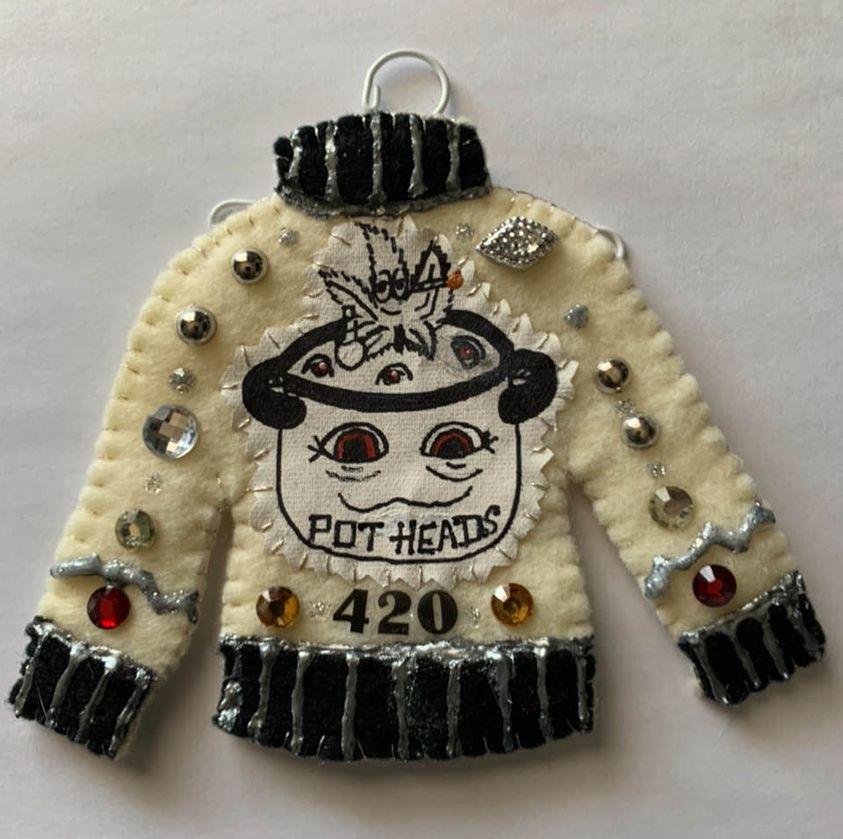Why THC has narcotic properties, and CBD does not? Why can one cannabinoid change the perception of reality so much, and the other seemingly not at all?
THC Vs CBD
The major difference between CBD and THC is the way they interact with the CB1 and CB2 receptors. THC binds with CB1 and CB2 receptors and produce certain psychological effects i.e high, while CBD doesn’t directly bind to CB1 and CB2 receptors, rather it acts as a negative modulator of CB1. In other words, the former has little affinity over the latter when they interact with these receptors.
The CB1 seems to be the most important receptor due to the effects it has on mood, cognitive functions, and pain.
THC Vs CBD binding site

In order for the molecule to connect to the receptor at all, it must have a suitable shape that matches the binding sites. The THC molecule has a spatial structure perfectly matched to the binding site in the CB1 receptor. While CBD acts as a negative allosteric modulator. Meaning they bind to it in a completely different place than the target binding site of THC. As you can see from the diagram above.
What does the negative allosteric modulator do?
They are able to change the shape of the receptor in such a way that THC won’t have access to it. In culmination, the activation of the CB1 receptor is reduced. As you can see from the diagram below.

The amount of substances that interact with the CB1 cannabinoid receptor is not limited to THC and CBD, as there are 6 different classes of substances that interact differently with the CB1 receptor – they are technically called ligands.

1. Ligands That Are Full Agonists
Thes are agonists that activate the CB1 receptor to the maximum possible extent. This information may surprise some people, but THC is not a full CB1 receptor agonist. However, there are many synthetic cannabinoids, including infamous afterburners, marked with the symbols CP-xxx, WIN-xxx, JWH-xxx, UR-xxx, and PB-xx, which are full receptor agonists.
2. Partially Ligands Agonists
Partial agonists may activate the CB1 receptor, but not to the maximum extent. THC belongs to this category of compounds, which means that even at the highest dose, it still does not activate this cannabinoid receptor 100%. This is one of the reasons why hemp is considered safe.
Here is an interesting fact (though we do not recommend it in practice). Partial agonists and full agonists compete for the same CB1 receptor binding site. So theoretically, if a person first used a synthetic cannabinoid (full agonist), then it can actually reduce the very strong intoxicating effect of marijuana.
3. The Antagonists
Although the antagonist substance will bind to the CB1 receptor in the same site as the agonist, unlike the latter, it does not induce a specific effect (does not stimulate the receptor). An example of such a compound is tetrahydrocannabivarin (THCV) — a naturally occurring cannabis plant that blocks the CB1 receptor at low concentrations. However, in Russia, anti-CB1 receptor antibodies (unusual antagonists) have been developed and introduced for clinical use. These include brizantin. The first of these is used to treat nicotine addiction to colloquially quit smoking and distress is obesity.
4. Inverse agonists
An inverse agonist is a substance that attaches to the receptor at the agonist binding site, but does not activate the receptor, on the contrary – inhibits its activity. Rimonabant is a classic example of CB1 inverse agonist. For a short period of time, the drug was approved for the treatment of obesity but was immediately withdrawn when depression was observed and the suicidal tendencies increased in patients taking it.
5. Positive allosteric modulators
Positive allosteric modulators (PAMs) attach to the receptor at a different site than other ligands. They alter the spatial shape of the receptor, which in turn leads to enhanced agonist activity. Research on PAMs for the CB1 cannabinoid receptor is a very interesting subject and is presently being funded by the American NIH (National Institute of Health). In this case, it is about strengthening the “natural” activation of CB1 endocannabinoids present in our body. An example of a PAM is the ZCZ011 molecule which, as shown by in vivo studies, can reduce neuropathic pain in mice without the observed psychoactive effects.
6. Negative allosteric modulators (NAMs)
Negative allosteric modulators are similar to PAMs. The difference is that they reduce the binding of the agonist. A naturally occurring example of NAM is pregnenolone — a neurosteroid, which as studies shows may reduce the psychoactive effect of THC.
Final thoughts
As you can see from the above, there are other receptors that interacts with CB1 receptors in the endocannabinoids system.

